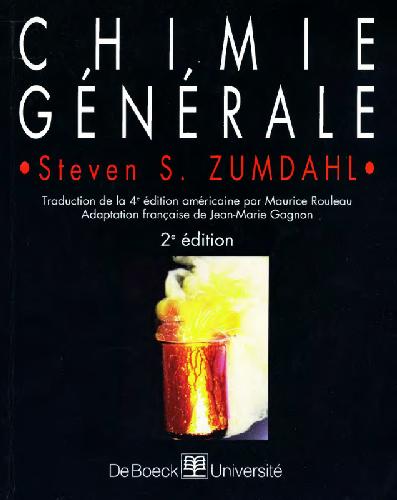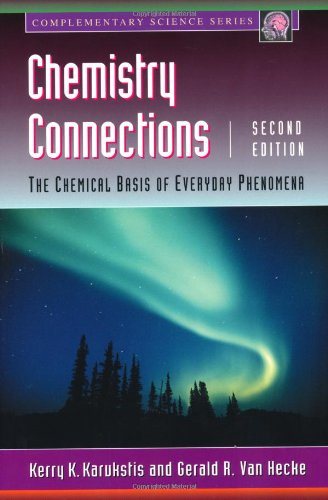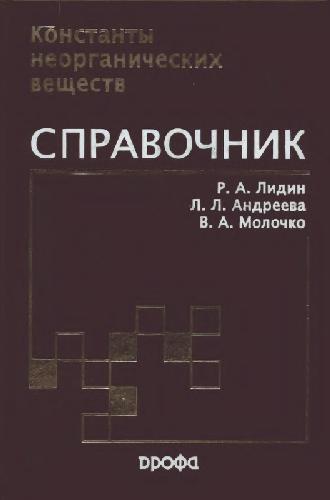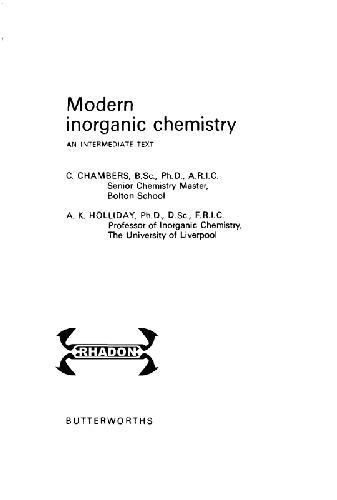A.B.P. Lever (editor)0080443230, 9780080443232
Table of contents :
Cover Page……Page 1
Editors-in-Chief……Page 2
Volume Editors……Page 3
International Advisory Board……Page 4
Preface……Page 5
Comprehensive Coordination Chemistry Mapping Tables……Page 6
Coordination Chemistry: The Past, Present, and Possible Future……Page 15
Introduction to Volumes 1 and 2……Page 17
Introduction to Volume 3……Page 18
Introduction to Volume 4……Page 19
Introduction to Volume 5……Page 20
Introduction to Volume 6……Page 21
Introduction to Volume 7……Page 22
Introduction to Volume 8……Page 30
Introduction to Volume 9……Page 31
Permission Acknowledgments……Page 33
COMPREHENSIVE COORDINATION CHEMISTRY II……Page 34
Volumes……Page 35
Info on Volume 1……Page 36
Introduction……Page 38
Homocoupling of halopyridines……Page 39
Cross-coupling of halopyridines with pyridyl organometallics……Page 40
Cycloaddition methods……Page 41
Other Synthetic Methods……Page 42
Functionalized Bipyridines: Synthesis and Uses of Common Building Blocks……Page 43
Hydrocarbons……Page 45
Acid Derivatives……Page 47
Unsymmetrical Derivatives……Page 48
Synthesis……Page 49
Bipyridines with Pendant Macrocycles……Page 50
Multidentate Chelates……Page 51
Bipyridines in the Main Chain……Page 52
Carbohydrates……Page 53
Biisoquinolines……Page 54
References……Page 55
Introduction and Basic Transformations……Page 61
Halogenation……Page 62
Alkylation and Catalyzed Cross-coupling……Page 63
Molecular Recognition and Phenanthroline-based Ionophores……Page 64
Chromophore-containing Phenanthrolines……Page 65
Oligophenanthrolines……Page 67
Polymer Supports for Phenanthrolines……Page 70
Phenanthroline-based Dendrimers……Page 71
References……Page 72
Introduction and Scope……Page 76
4´-Substituted……Page 77
6-Substituted……Page 79
4,4´-Disubstituted……Page 81
6,6´-Disubstituted……Page 82
Trisubstituted Terpyridines……Page 83
Other Fused……Page 84
Oligopyridines……Page 86
References……Page 87
Complexes with the 1,8-Naphthyridine Ligand……Page 89
Complexes with Functionalized Derivatives of the 1,8-Naphthyridine Ring……Page 90
Other Multidentate Ligands Derived from the 1,8-Naphthyridine Ring……Page 93
References……Page 94
Introduction and Scope……Page 96
Overview……Page 97
From halopyridazines……Page 98
From pyridazine-carbaldehydes and pyridazine-ketones……Page 99
From 1,2,4,5-tetrazines……Page 101
Preparation of precursors: 1,4-dihalophthalazines, 1,4-dicyanophthalazine, and 1,4-dihydrazinophthalazine……Page 103
From 1,4-dihydrazinophthalazine……Page 105
Condensed phthalazine-derived ligands……Page 106
Coordination Chemistry……Page 107
Overview……Page 109
Preparation of precursors: imidates, amide hydrazones, and hydrazides……Page 111
Ligand Preparations……Page 112
Coordination Chemistry……Page 121
Concluding Remarks……Page 123
References……Page 126
Introduction……Page 129
Structure and Tautomerism of beta-Diketones……Page 130
Synthesis of beta-Diketones……Page 131
Coordination Modes of beta-Diketones……Page 133
Monoanionic beta-diketonates……Page 134
Synthesis from Metals……Page 135
Synthesis from Metal Acetates, Nitrates, Sulfates, or Carbonates……Page 136
Synthesis from Metal Alkyls or Aryls……Page 137
Tri-, Tetra-, and Polyketones……Page 138
Diketones with Substituents Containing Additional Donor Atoms……Page 139
Acylpyrazolones and Analogue beta-Diketones with a Heterocycle Fused to the Chelating Ring……Page 141
References……Page 144
Neutral Phenylcyanamides (pcydH)……Page 148
Physical Properties of Phenylcyanamides……Page 149
Coordination Geometry……Page 150
Ruthenium Complexes……Page 151
Cobalt Complexes……Page 152
Copper, Silver, and Gold Complexes……Page 153
Summary……Page 154
References……Page 155
Synthetic Methods for Benzimidazole Derivatives……Page 156
Modular Approach……Page 158
Chelate Ligands Composed of a Combination of Bidentate Ligands……Page 159
Chelate Ligands Composed of a Combination of Tridentate Ligands……Page 160
Chelate Ligands Composed of Miscellaneous Combinations……Page 161
Chemical Functions of Coordination Compounds with Imidazole/Benzimidazole Ligands……Page 162
References……Page 164
Scope and Limitations……Page 166
Introduction to Bridging Ligands……Page 167
Diazines and Polyazines……Page 168
Linked Pyridines……Page 169
Bridging Ligands with Donor Atoms Outside the Ring……Page 171
Bridging Ligands with Multiple Donor Atoms in a Ring……Page 172
Bridging Ligands with Pyridine Subunits……Page 173
Conjugated spacers……Page 174
Bridging Ligands with Phenanthroline Subunits……Page 175
Fused ring systems……Page 176
Linked phenanthrolines……Page 177
Pyridine-based Bridging Ligands……Page 178
Other Bridging Ligands……Page 179
Linked Bridging Ligands……Page 180
Porphyrin-containing Bridging Ligands……Page 181
Cavity Bridging Ligands……Page 182
References……Page 184
Introduction……Page 189
Preparation of Poly(pyrazolyl)borates……Page 191
Specific Bpx Ligands……Page 193
Regiochemistry in ligand synthesis……Page 211
Steric effects……Page 212
Coordination Modes……Page 213
Soft S-Donor Scorpionates……Page 214
Hydrobis(mercaptoimidazolyl)Borates (Bmx)……Page 215
Hydrotris(mercaptoimidazolyl)Borates (Tm)……Page 216
Poly(Imidazolyl)Borates……Page 217
Poly-(triazolyl)- (HnB(tz)4-n), -(tetrazolyl)-borates (HnB(tet)4-n)……Page 218
Poly(benzotriazolyl)Borates (HnB(Btz)4-n)……Page 219
Coordination modes of bis(pyrazolyl)alkanes……Page 220
Synthesis of symmetrical bis(pyrazolyl)alkanes……Page 222
Synthesis of unsymmetrical bis(pyrazolyl)alkanes……Page 223
Tris(pyrazolyl)Alkanes……Page 224
Synthesis of tris(pyrazolyl)methanes……Page 225
Unsymmetrical tris(pyrazolyl)methane……Page 227
C-alkylated tris(pyrazolyl)methane……Page 228
Poly(Pyrazolyl)Silanes……Page 229
Tris(Pyrazolyl)Methanesulfonato……Page 230
Heteroscorpionates……Page 231
Poly(Azolyl)-Phosphine, -Phosphinate, Phosphazene and Phosphine-Oxide……Page 232
Bis(azolyl)-metallates……Page 233
References……Page 234
Introduction……Page 241
Substituted Diamines……Page 242
Polyamines……Page 245
Diamine-Diamide Ligands……Page 248
2,6-Substituted Pyridines……Page 249
Xylyl-based Ligands……Page 250
Multidentate Ligands Containing Pyridazine, Phthalazine, Pyrazolyl, Thiazolyl, Oxadiazolyl, Triazine, and Thiophene Bridges……Page 251
Multidentate Ligands Containing More than Two Pyridine Rings……Page 253
Polyethyleneglycols and Glymes……Page 254
Tripodal Ligands with Nitrogen as the Bridgehead Atom……Page 256
Tripodal Ligands with Carbon as the Bridgehead Atom……Page 261
Macrocyclic Ligands……Page 262
Crown Ethers……Page 263
Other Preorganized Macrocycles……Page 264
Photoresponsive macrocycles……Page 265
pH-responsive macrocycles……Page 266
Siderophore-type Macrocycles……Page 267
Dendrimeric Ligands……Page 268
Polycarboxylic Acids……Page 270
References……Page 276
1.12 Phosphorus Ligands……Page 282
Synthetic routes……Page 283
By reduction……Page 285
Miscellaneous methods……Page 287
Secondary Phosphines……Page 288
Using metal phosphides……Page 289
Reactions of secondary phosphines……Page 290
Tertiary Phosphines……Page 291
Using other organometallics……Page 292
Alkali-metal derivatives……Page 293
Hydrophosphinations……Page 294
From polyphosphines……Page 295
Preparation by classic methods……Page 296
Functionalized Tertiary Phosphines……Page 297
Ditertiary Phosphines……Page 299
Polydentate Tertiary Phosphines……Page 301
Synthetic routes to water-soluble tertiary phosphines……Page 303
Synthetic routes to fluorinated tertiary phosphines……Page 305
Coordination chemistry of fluorinated tertiary phosphines and catalytic applications……Page 306
Synthesis of tertiary phosphine oxides……Page 307
Properties of tertiary phosphine oxides……Page 308
Synthetic routes……Page 309
Synthesis of phosphinites, phosphonites, and phosphites……Page 311
Coordination chemistry……Page 314
By aminolysis reactions……Page 315
Coordination chemistry of (phosphino)amines……Page 317
References……Page 318
Introduction……Page 326
Tripod Ligands with Three Equal Phosphane Donors……Page 327
Tripod Ligands with Three Different Phosphane Donors……Page 328
Tripod Ligands with Chiral Phosphane Donors……Page 330
Tripod Ligands Containing Two Potentially Different Phosphane Donors……Page 331
Tripod Ligands Containing One Phosphane Donor……Page 333
Tripod Ligands Containing RCp Donor Groups……Page 334
Tripod Ligands with Different Types of Linker and Donor Groups……Page 336
Tripod Ligands with a Phosphane Donor Bonded to the Central Carbon……Page 339
Tripod Ligands with a Neopentane-like Scaffolding……Page 341
Tripod Ligands with a Central Nitrogen……Page 342
Tripod Ligands with a Central Phosphorus……Page 343
Tripod Ligands Based on Miscellaneous Scaffoldings……Page 345
Heterocycles as Tripod Ligands……Page 347
References……Page 349
Introduction……Page 352
Oxidation of bis(phosphino)amines – method A……Page 353
Sodium hydride……Page 354
Alcoholysis of bis(dichlorophosphoryl)amide (tetrachlorodioxodiphosphazane)……Page 355
Hydrolysis of other functional diphosphazene derivatives……Page 356
In situ formation of imidodiphosphinato ligands……Page 357
Acidity And Preparation Of Alkali Metal And Other Salts……Page 358
Spectroscopic And Structural Characterization……Page 363
Coordination Patterns……Page 364
Metal Complexes……Page 370
References……Page 371
Introduction……Page 377
Dithiophosphinic acids, R2P(S)SH……Page 378
Coordination patterns……Page 379
Dithiophosphinates……Page 380
Dithiophosphates……Page 382
Dithiophosphonates……Page 383
Metal complexes……Page 385
Synthesis……Page 387
Coordination patterns……Page 389
Metal complexes……Page 390
General……Page 391
Coordination patterns……Page 392
Metal complexes……Page 393
Metal complexes……Page 395
References……Page 397
Introduction……Page 405
Arsine Synthesis……Page 406
Stibine Synthesis……Page 407
Bismuthine Synthesis……Page 410
Bonding……Page 411
Coordination modes……Page 413
References……Page 415
Thioethers……Page 418
Selenoethers……Page 419
Telluroethers……Page 420
Bonding……Page 422
References……Page 423
Introduction……Page 426
Thioether Macrocycles……Page 427
Coordination Chemistry and Properties……Page 428
Selenoether Macrocycles……Page 430
Telluroether Macrocycles……Page 433
Abbreviations……Page 435
References……Page 436
Introduction……Page 438
General Synthetic Method……Page 439
Tautomerism……Page 440
Monodentate Schiff Bases……Page 441
N,N and N,O Donors……Page 442
N,S(Se) Donors……Page 443
N,O Donors……Page 444
Other Donors……Page 445
Asymmetrical……Page 447
Symmetrical……Page 449
N,S, N,O,S and other Donors……Page 452
Chiral Tetradentate Schiff Bases……Page 453
Equilibrium Studies……Page 454
Compartmental Acyclic Schiff Bases……Page 455
Phenol-based Derivatives……Page 456
Di- and Triketone Derivatives……Page 458
End-off Ligands……Page 459
Polypodal Ligands……Page 460
Macrocyclic Schiff Bases……Page 462
Compartmental Macrocycles……Page 464
Noncompartmental Macrocycles……Page 466
Bibracchial Macrocycles……Page 467
Ring Contraction and Expansion……Page 468
References……Page 470
Introduction and Scope……Page 474
Cyclic Secondary Amines……Page 476
Azamacrocycles with Imine Functions……Page 477
Ketone and beta-enone-Amine Reactions……Page 478
beta-Keto Imine-Amine Reactions, Cyclidenes……Page 479
Beta-Dicarbonyl-Amine Reactions……Page 480
Azamacrocycles with Amide or Amidate Functions……Page 481
Macrocycles Formed by Mannich Condensations, Azacyclams……Page 484
Functionalized C-substituents……Page 485
Nitro- and Amine-substituents……Page 486
Nitromethyl and Aminomethyl Substituents……Page 487
Carboxyl Substituents……Page 488
C-pendants that Coordinate Exocyclic Cations……Page 489
Azamacrocycles with N-Substituents……Page 490
Carboxyalkyl Substituents……Page 491
Omega-Aminoalkyl Substituents……Page 492
Other N-substituents……Page 493
Bi- and Tricyclic Azamacrocycles……Page 494
Spiro-azamacrocycles……Page 495
N-X-N´ Linked Bisazamacrocycles……Page 496
References……Page 498
Phosphine Macrocycles……Page 502
Arsine Macrocycles……Page 509
References……Page 511
Introduction……Page 512
Unsubstituted Calixarenes……Page 513
Aryloxides……Page 515
Oxygen and Nitrogen Donor Atoms……Page 516
References……Page 517
Introduction……Page 519
Strategic Considerations in Porphyrin Synthesis……Page 520
2,3,7,8,12,13,17,18-Octaethylporphyrin (H2OEP (1))……Page 521
5,10,15,20-Tetraphenylporphyrin (H2TPP (2))……Page 525
Transformation of dipyrromethenes into porphyrins……Page 526
Syntheses of dipyrromethanes……Page 527
Transformation of dipyrromethanes into porphyrins……Page 528
5,15-Diaryl and 5,15-Dialkylporphyrins……Page 531
References……Page 532
Introduction……Page 533
General Synthetic Considerations……Page 534
Substituted Phthalocyanine Ligands……Page 535
Nonuniformly Substituted Pcs……Page 536
Azaphthalocyanines……Page 537
Extended Phthalocyanines……Page 538
References……Page 539
1.25 Metal Aqua Ions……Page 541
Geometry of Aqua Ligands……Page 542
Group 1: Li+(aq), Na+(aq), K+(aq), Rb+(aq),Cs+(aq)……Page 543
Group 3: Scandium, Yttrium, the Lanthanides, and Actinides……Page 544
Group 4: Titanium, Zirconium, and Hafnium……Page 546
Group 5: Vanadium, Niobium, and Tantalum……Page 548
Group 6: Chromium, Molybdenum, and Tungsten……Page 550
Group 7: Manganese, Technetium, and Rhenium……Page 553
Group 8: Iron, Ruthenium, and Osmium……Page 555
Group 9: Cobalt, Rhodium, and Iridium……Page 556
Group 11: Copper, Silver, and Gold……Page 559
Group 12: Zinc, Cadmium, and Mercury……Page 560
Group 13: Boron, Aluminum, Gallium, Indium, and Thallium……Page 561
Group 14: Germanium, Tin, and Lead……Page 562
Range of Labilities of Aqua Metal Ions……Page 563
Formation of Metal Complexes……Page 565
Classification of Mechanisms……Page 566
Volume of Activation……Page 567
Group 2: Be2+, Mg2+……Page 569
Six-coordination Divalent Transition Metal Aqua Ions……Page 570
Six-coordinate Trivalent Transition Metal Aqua Ions……Page 573
Transition Metal Oxo/Aqua Ions……Page 574
Trivalent Lanthanide Metal Ions……Page 575
References……Page 577
Solvent Properties……Page 582
Donor number……Page 583
Classification based on chemical constitution……Page 584
Other classification……Page 585
Ionic Solvents……Page 586
The Cations……Page 587
BF4- or PF6- containing ionic liquids……Page 588
Solvent Properties of Ionic Liquids……Page 589
References……Page 590
Choosing the “Right” Chromatography……Page 592
General Separation Techniques……Page 593
Separations of Chiral Complexes and Isomers……Page 594
Capillary and Capillary Zone Electrophoresis of Complexes……Page 595
Size-exclusion Chromatography (SEC) for Metal Complexes……Page 596
IMAC Separations via Inorganic Complexes……Page 597
Immobilized Metal Complexes for Organic Separations (IMCOS)……Page 598
Computer-Aided Chromatography Involving Metal Complexes……Page 599
References……Page 601
Introduction……Page 603
Cooling……Page 604
Sublimation……Page 605
Slow Diffusion of Reactants……Page 606
Other Approaches to Obtaining Better Crystals……Page 607
Introduction……Page 608
Electron-acceptor/donor Properties of the Metal Center……Page 609
Electron-donor/acceptor Properties of the Ligands……Page 610
Acid-Base and Related Reactions……Page 611
Template Synthesis……Page 612
Summary and Conclusions……Page 613
References……Page 614
Bonding and Structural Types……Page 618
Infrared Spectral Characteristics……Page 620
Reactions with Electrophiles……Page 621
Oxidative Coupling……Page 622
Catalytic Reduction of Co2……Page 623
References……Page 624
General Properties of NO, Bonding Models, and the Enemark-Feltham Formalism……Page 626
Coordination number 6……Page 628
Coordination number 5……Page 633
eta1-ON (Isonitrosyls) and eta2-NO Complexes……Page 635
N2O Complexes……Page 636
Synthesis……Page 638
Nucleophilic additions to bound NO……Page 640
Reductive nitrosylation……Page 641
Synthesis of N2O complexes……Page 642
Catalyzed disproportionation of NO in basic medium……Page 643
References……Page 644
First-Row Transition Metals……Page 647
Second- and Third-Row Transition Metals……Page 650
References……Page 651
Reactions with Preservation of the {Cno} Fragment……Page 652
Reactions Centered at the O-atom……Page 653
Reactions Centered at the N- or the C-atom……Page 654
Reactions with N-O Bond Cleavage……Page 656
References……Page 657
Introduction……Page 659
Reactions with Aprotic Nucleophiles and Subsequent Electrophilic Additions……Page 660
Water and alcohols……Page 663
Formation of C-N bonds……Page 667
Cycloadditions……Page 671
Electrophilic Additions……Page 673
References……Page 677
Theoretical Background……Page 681
The Hardness Rule……Page 684
The Energetic Origin of the Lone-pair Effect……Page 685
References……Page 687
Solute-Solvent Interactions (SSI)……Page 688
Symmetry Effects by the Second Coordination Sphere……Page 689
Bond Strength and Covalency Effects Induced by the Second Coordination Sphere……Page 691
The Stabilization of High Oxidation States of the Late 3d-Metals by Second Coordination Sphere Effects……Page 693
References……Page 696
Introduction and Scope……Page 698
The Hydrogen Bond……Page 699
1D Assemblies Based on Silver(I) Complexes……Page 700
Halometallates as Hydrogen-bond Acceptors……Page 701
Layered Networks with other Transition-metal Ions……Page 702
Metalloporphyrins as Supramolecular Building Blocks……Page 703
Combining Coordination Polymers and Hydrogen Bonds……Page 704
References……Page 706
The Approaches to Biphasic Synthesis……Page 708
Solvent Combinations……Page 709
Ionic Liquid-Organic……Page 710
Ionic Liquid-Aqueous……Page 712
Biological Relevance……Page 713
References……Page 714
Hydrothermal Synthesis of Organic-Inorganic Hybrid Materials: General Considerations……Page 715
The Organic Component……Page 716
Metal Organophosphonates……Page 718
Inorganic Oxides Incorporating Organoimine Ligands……Page 720
Bimetallic Oxide Networks……Page 722
Metal-Halide and -Pseudohalide Materials……Page 725
References……Page 726
Introduction……Page 728
Hydrolysis and Condensation……Page 730
Control of Morphology……Page 731
Modifiers……Page 732
Multinuclear Alkoxide Precursors: Homonuclear……Page 733
Multinuclear Alkoxide Precursors: Heteronuclear……Page 734
Organic-Inorganic Hybrid Materials……Page 735
Alkyltrialkoxysilanes and Silasesquioxanes……Page 736
Doping with Polymers……Page 737
Templating of Sol-Gel Materials……Page 738
Aqueous Colloidal Precursors: Condensation……Page 739
Examples of Sol-Gel Syntheses In Catalysis,Electroceramics, Electrochromics, and Biomaterials……Page 742
References……Page 743
Introduction……Page 748
Acoustic Cavitation……Page 749
Microjet Formation During Cavitation at Liquid-Solid Interfaces……Page 750
Spectroscopic Probes of Cavitation Conditions……Page 751
Homogeneous Sonochemistry: Bond Breaking and Radical Formation……Page 752
Applications of Sonochemistry to Materials Synthesis……Page 753
Heterogeneous Sonochemistry: Reactions of Solids with Liquids……Page 754
Conclusions……Page 755
References……Page 756
Mechanisms of Microwave Heating in Condensed Matter……Page 757
Comparison of Microwave and Conventional Heating……Page 758
Microwave Applicators……Page 759
Conclusions……Page 760
References……Page 761
Types of Self-Assembly and their Utility in Designed Synthesis……Page 762
Thermodynamic Self-Assembly……Page 763
Mismatching Ligand and Metal Preferences……Page 764
Entropy-driven Self-assembly……Page 765
Self-assembly Involving Geometric Complementarity……Page 766
Stoichiometry-driven Self-assembly……Page 767
“Rings-and-strings” Self-assembly……Page 769
Multiple-interaction Self-assembly……Page 772
References……Page 773
Basic Principles……Page 775
Reference Electrode……Page 776
Electrolytes……Page 777
Electrocrystallization Conditions……Page 778
Additional Parameters……Page 780
Electrolysis at Sacrificial Electrodes……Page 781
Organometallic complexes……Page 782
Electrochemical oxidation of a complex……Page 783
Concomitant formation of complex and material……Page 784
Dedication……Page 785
References……Page 786
Introduction……Page 788
Multi-electron Transfer and Noninnocent Ligands……Page 790
ECE Reactions and Catalysis……Page 792
Dimers and Higher Nuclearity Complexes……Page 793
Porphyrins, Phthalocyanines, and Macrocyclic Complexes……Page 794
Raman Spectroelectrochemistry……Page 795
Carbonyls……Page 796
Non-carbonyl Ligands with Multiple Bonds: Nitrosyls, Cyanides, Nitriles, Isonitriles, Thiocyanates……Page 797
Epr Spectroelectrochemistry……Page 798
References……Page 799
Introduction……Page 803
Methods for Introduction and Replacement of Metal Ligands in Proteins……Page 804
Identification of Protein-derived Metal Ligands in the Absence of Structural Information……Page 807
Residues in the second coordination shell……Page 808
Trans-substitution as a Means to Modify Ligand Chemistry……Page 809
Identification of Protein Ligands in the Absence of Structure Using trans-Substitution……Page 810
Structure-Energy-Function Studies of Known Ligands using trans-Substitution……Page 812
Mimicking Naturally Occurring Metal Sites……Page 814
Glossary……Page 815
References……Page 816
Appendix to Volume 1……Page 819







Reviews
There are no reviews yet.